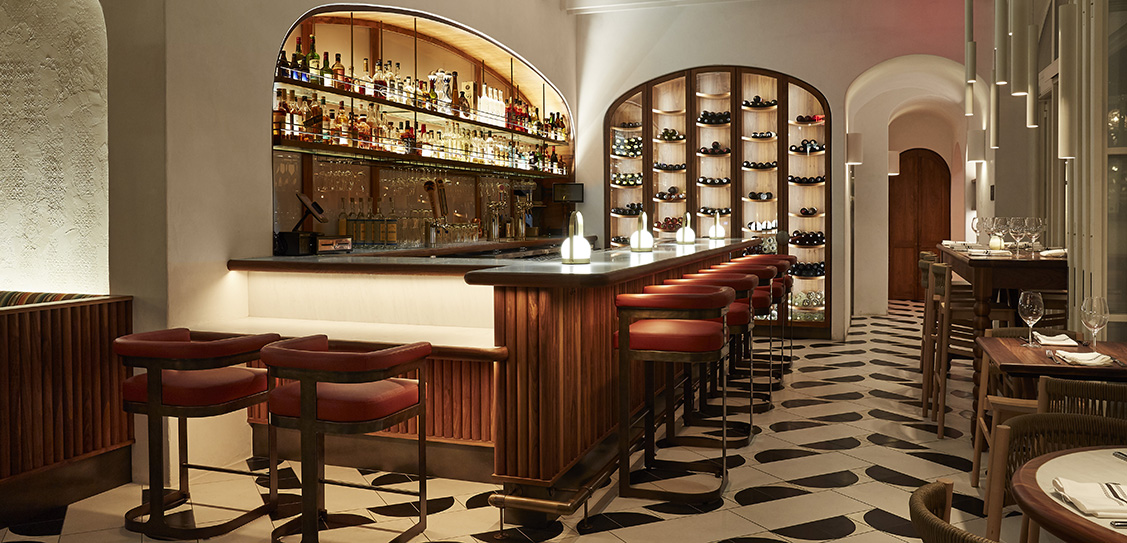Located in The Commons at Calabasas, developer Rick Caruso’s missionary-style, high end retail and dining destination, the new Porta Via pays homage to the Spanish Colonial Revival style of the Calabasas Civic Center, and to the beach enclave of Careyes, Mexico, made legendary by the rainbow-pigmented dwellings of and the bohemian energy of the 70s jet set; the design aligns the romanticism of the Mexican coastline with the functionality of all-day California bistro dining.
The new Porta Via outpost offers sun soaked, palazzo terrace dining by day, while the glow of Mexican rattan pendants lining the length of the space beckon by night and summon the private villas of Careyes such as Casa Quinto Sol and Casa Triton. The iconic motifs and murals of the architect Marco Aldaco’s landmark villa, Casa Maoritze, were replicated in the graphic design of the bathroom suite.
The existing footprint had already planned for 75% of seating to be outdoor, ideal for accommodating a dining culture in transition, and providing an all-season haven for California’s community. Goineau widened arches for an interior to exterior flow, softened sharp edges and applied custom plaster wall finishes and a crisp white facade to evoke the open air atmosphere of Puglia, Italy and Mediterranean adobe villa.
A total of 90% of the bespoke furnishings were sourced from Los Angeles and Southern California vendors, in addition to a few standouts that were custom made by artisans overseas, such as the white macrame pendants from Naomi Paul in London and Emilio Nanni rope chairs handmade in Italy.
Whenever possible, the team used Los Angeles craftspeople and vendors to better support the local community and imbue a true California lifestyle. For the upholstery, Goineau sourced colour saturated, authentic indigenous textiles from shops on Pico Boulevard. The floor tiles are made in Los Angeles from organic clay and cement, inlaid in a reverse-chevron pattern concepted by Goineau to incorporate a traditional Mexican folkloric sphere motif. The designs reflect one another meticulously in each layer of furnishings, from the buttery soft wood table bases and bar, to the millwork and metalwork, and the gargantuan custom made mirror, installed on one vast arcade wall and nearly doubling the illusion of space.



